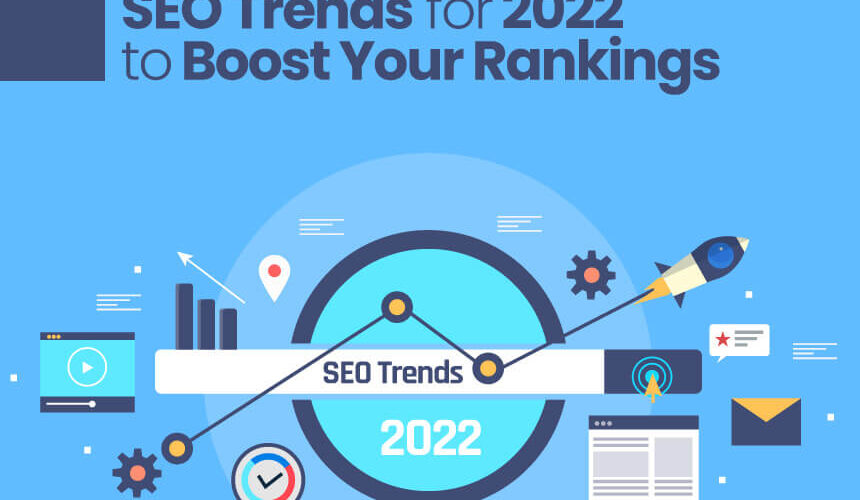You’ve seen the numbers. You’ve gone over the facts and figures. You’ve concluded that your business needs to invest in local search engine optimization. Thousands of individuals in your neighbourhood are looking for products, services, and solutions similar to those you offer.
Suppose you don’t rank well on search engine results pages. In that case, you’re missing out on not only significant web traffic but also good old-fashioned foot traffic, engagement opportunities, and, ultimately, cash. You’ve realized that your search engine optimization activities need to be stepped up (or kicked off!)… However, you’re not sure how. We’ve got you covered. Here’s your 2022 local search engine optimization checklist.
1. The user’s and page’s interaction
Page experience has always been important to web designers and user experience (UX) designers. Customers are more likely to purchase products and services if the UX helps them feel at ease on the website.
Page experience, on the other hand, will become even more critical in 2022 due to Google’s recent algorithm update, which now includes elements of a website’s page experience in its rankings.
Google considers many elements when determining how good or bad a website’s user experience is. Consider mobile-friendliness, website usability, navigation, button placement, web load speed, and how dynamic information, such as pop-ups, appears.
2. Artificial Intelligence (AI)
Artificial intelligence (AI) will begin to play a more significant part in SEO efforts in 2022 as it continues to transform how consumers interact with information online.
Google’s artificial intelligence algorithm RankBrain is expected to become one of the most important ranking elements in the SERPs by 2022.
While Google has not revealed how RankBrain learns and evaluates content, search engine optimization professionals believe that user experience will be one of the most important ranking criteria. RankBrain will consider the click-through rate and the number of visitors who spent time on a page when ranking content.
3. Featured Snippets Provide Zero-Click Results
In 2019, more than half of all Google searches ended in users finding the information they require on the search results page, implying that most users never visit a company’s website.
Google’s featured snippets were designed with mobile in mind, and they’ve proven to be helpful, as highlighted snippets now take over half of a smartphone screen. Although featured snippets appear twice as quickly in the first search engine results pages (SERPs), it wasn’t long before consumers had mistaken them for advertisements and avoided clicking on them.
Google uses highlighted snippets and top organic search results to remove duplicate material, still an essential part of search engine optimization services.
4. Mobile Compatibility
Since Google made mobile-friendliness a ranking criterion, it has become a cornerstone of search engine optimization services. Google is now employing mobile-first indexing to index new websites, which means that new websites will be judged first on their mobile design rather than their desktop design.
Many people are unsurprised by this transition, as it is estimated that by 2025, approximately 75% of internet users will only utilize mobile devices to access the internet. Because search engines favour mobile versions of websites over desktop versions, optimizing your website content for mobile devices is more critical than ever.
This implies that customers expect mobile designs to be simple to use and load quickly. You should ask yourself the following questions regarding your website: Is your mobile design’s typeface large enough? Is it quick and straightforward to locate the most important connections and information?
5. Search by Voice
Thanks to high-tech voice assistants, voice searches have become quite popular. As a result, individuals choose to use voice search rather than typing.
It’s important to remember, though, that people speak to their phone or smartphone in a different way than they type into a search engine. This means that if you want to appear in local voice searches, you should think about how people naturally speak while developing content for your website.
As you plan your SEO strategy for 2022, consider applying these strategies to improve your website for voice-based questions. Because voice searches are conversational, your content should be as well. As a result, updating your website’s content to include shorter information makes analyzing voice search easier.
People speak in a more “natural” manner when using voice search. As a result, concentrating on long-tail keywords is crucial, as this situation concerns human speech rather than keyword variants.
Voice searches, unlike traditional searches, provide a conversational tone in addition to keywords. Even if your material has relevant keywords and lacks the natural language the search inquiry requires, you’re unlikely to rank for that voice search using robotic language.
6. Optimization of images
It’s no surprise that visual content will improve the user experience because Google has always emphasized the importance of adequately tagging and optimizing photos for web admins and site owners.
In 2022, people will be more likely to click on photographs to purchase or obtain information rather than for aesthetic reasons.
As a result, every SEO agency should use high-quality photos, capitalize on relevant file names, change alt text with essential keywords, infographics, and watermarks to optimize pictures. Such image optimization approaches have a proven track record!
Conclusion
It’s as simple as that. All of these are more crucial than ever as search engines improve and affect our lives. Use these SEO trends for your small business if you want to keep ahead of the competition.
Your users eagerly await your website’s appearance on the search results page. SEO isn’t just for huge businesses. All businesses will benefit from taking these trends seriously and seeing how far they will go. From reviews to voice search, what will you take advantage of next?
Source link




